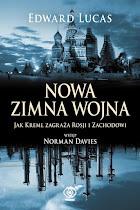Welcome to Baltland
In Russian, the Baltic states are called pribaltika—literally, the "Baltic shore." That infuriates Estonians, Latvians, and Lithuanians, as do most other attempts to lump them together. Estonians are the prickliest: Toomas Hendrik Ilves, now president, angered his southern neighbors by saying that Estonia should be more fairly counted as a Nordic country, not a Baltic one. That was tactless. But in truth, the differences are legion and the similarities—barring one chunk of tragic 20th-century history—scant.
In Estonia and Latvia, national consciousness began only in the 19th century with the emancipation of serfs, the growth of literacy, and the stirring of resentment against German barons and tsarist rule. Not so in Lithuania. Its identity is shaped by a folk memory of superpower status. The Grand Duchy of Lithuania, the last pagan state in Europe until 1387, once stretched to the shores of the Black Sea. It was larger than the Holy Roman Empire and had six official languages. Now the size of West Virginia with only 3.7 million people, Lithuania has shrunk. But its sense of grand identity remains. In any intra-Baltic discussion, Lithuania tends to lead with a grandiose self-centered plan, often with a blithe disregard for practicalities. In March 1990, for example, Lithuania mounted a frontal attack on the Soviet Union and declared independence; Estonia and Latvia, by contrast, initially held back and only declared "sovereignty."
The three countries also have different foreign phobias. Anti-Semitism has plagued Latvia and Lithuania, but not Estonia. Russia and Russification worry Estonia and Latvia more than Lithuania, which is instead twitchier about Poland. It has clashed with Poland repeatedly over the city of Vilnius (Polish-occupied in the interwar years) and in recent years over whether their respective minority populations can spell their names in official documents with letters such as ? (which exists in Polish but not the Lithuanian alphabet) or "?" (a Lithuanian letter nonexistent in Polish).
The three states have struggled, literally and figuratively, to find a common language. Older people speak Russian, usually badly in Estonia and rather well in Lithuania. Younger people speak English, often quite proficiently in Estonia and somewhat more rarely in Latvia and Lithuania. Almost no Baltic country studies or speaks the languages of the others. A Lithuanian diplomat once told me, "It is easier for us to find a Chinese speaker than an Estonian speaker."
Life under Soviet rule was different, too. Some Lithuanians were able to watch Polish television—a huge excitement during the 1980-81 Solidarity era, and always more informative than Soviet propaganda. Similarly, from the early 1960s on, Estonians in the north of the country were able to receive Finnish television, which broadcast subtitled foreign films and documentaries: a vital window into the real world. Finns also flooded into Tallinn on cheap, visa-free booze cruises. Estonians referred to them derisively as "moose" (because, as an Estonian woman once told me, they are "large and noisy, with clumsy mating habits").
The differences between the Balts are arcane and sometimes amusing. But they matter. Estonia's Nordic-style thrift, openness, and careful planning have proved almost ideal for the post-communist years. It was the wealthiest of the three before the occupation, and it is still the leader. But its smugness-the big weak point-has now let it down badly. Latvia's more diffuse identity has perhaps meant weaker bonds between state and society, which has allowed corruption to flourish and prevented a speedy response to the crisis. Lithuania's headstrong "we do it differently" approach has repeatedly cost it time and friends, but the lag spared the country the spending frenzy that has cost the other two so dearly.
Relations will never be as close as, say, between Estonia and Finland. But sibling rivalry has its virtues. It encourages innovation-what one country invents, the others can copy. And each country is determined to be the first to emerge from the crisis.
MAP BY KATHERINE YESTER
Edward Lucas is a senior writer at The Economist and author of The New Cold War: Putin's Russia and the Threat to the West.
You are here: Home > Lithuania > Foreign Policy magazine (2)
Wednesday, June 24, 2009
Foreign Policy magazine (2)
Subscribe to:
Post Comments (Atom)
























5 comments:
Might just be my browser/computer, but photo placement has changed the margins, making this post unreadable.
Not just yours, mine as well. :(
Ditto. The right-hand sidebar is placed over the right margin of the post. Same problem in Safari and Firefox.
sorry about this layout glitch and thanks to Kristopher and others for pointing it out.
It is fixed now. (at least, it works fine in my browser)
best regards
Edward
Hmm, I've tried IE, Google Chrome, and Mozilla and still can't see the right margin of the article. Not a techie, so I'm not sure what to offer, but hope this problem can be reviewed again. Thanks.
Post a Comment